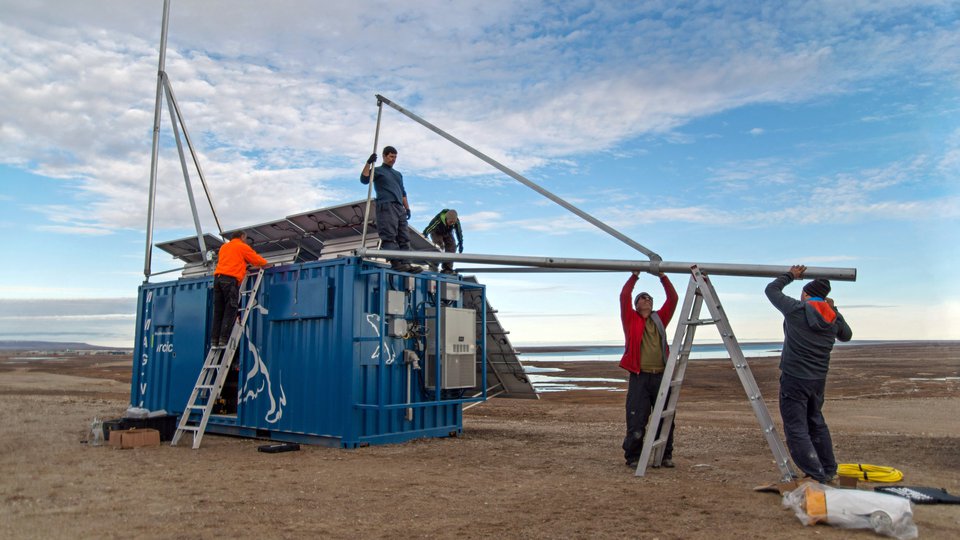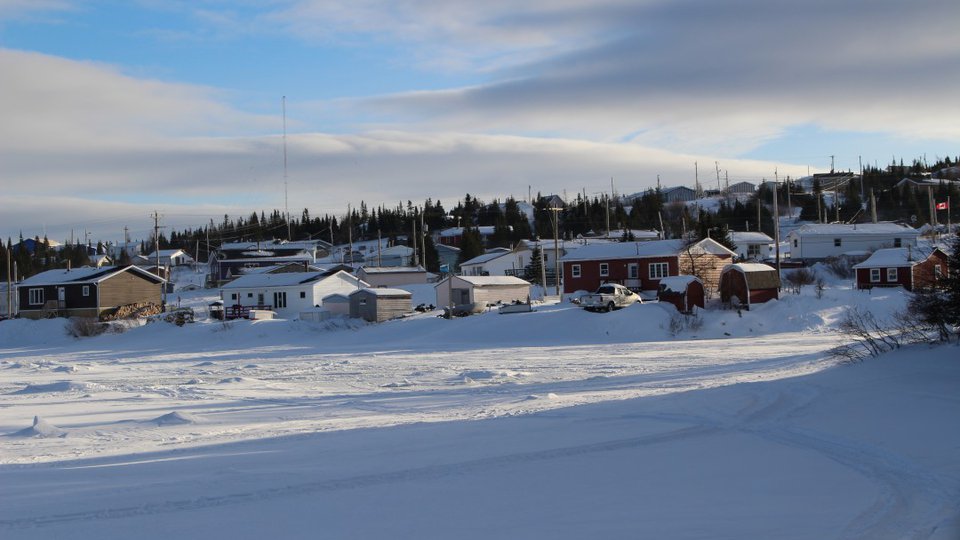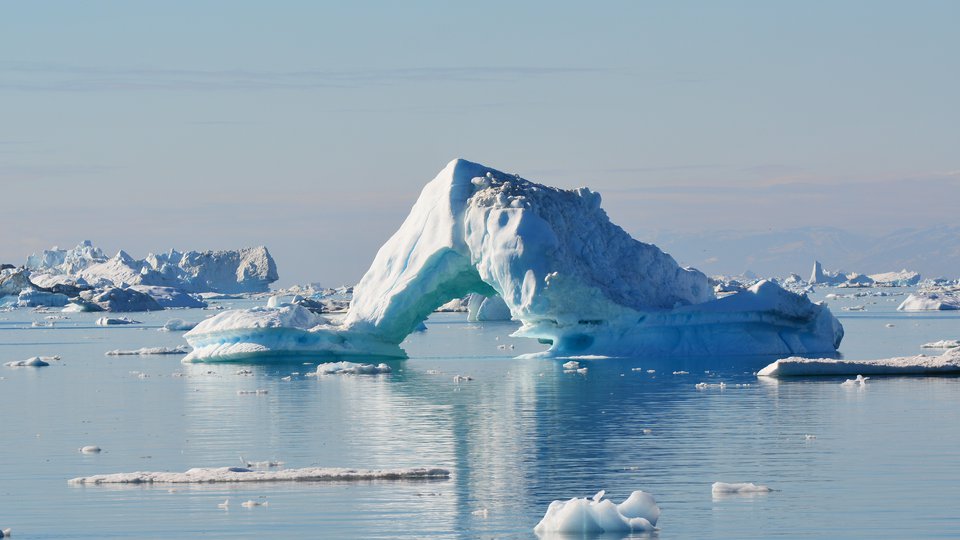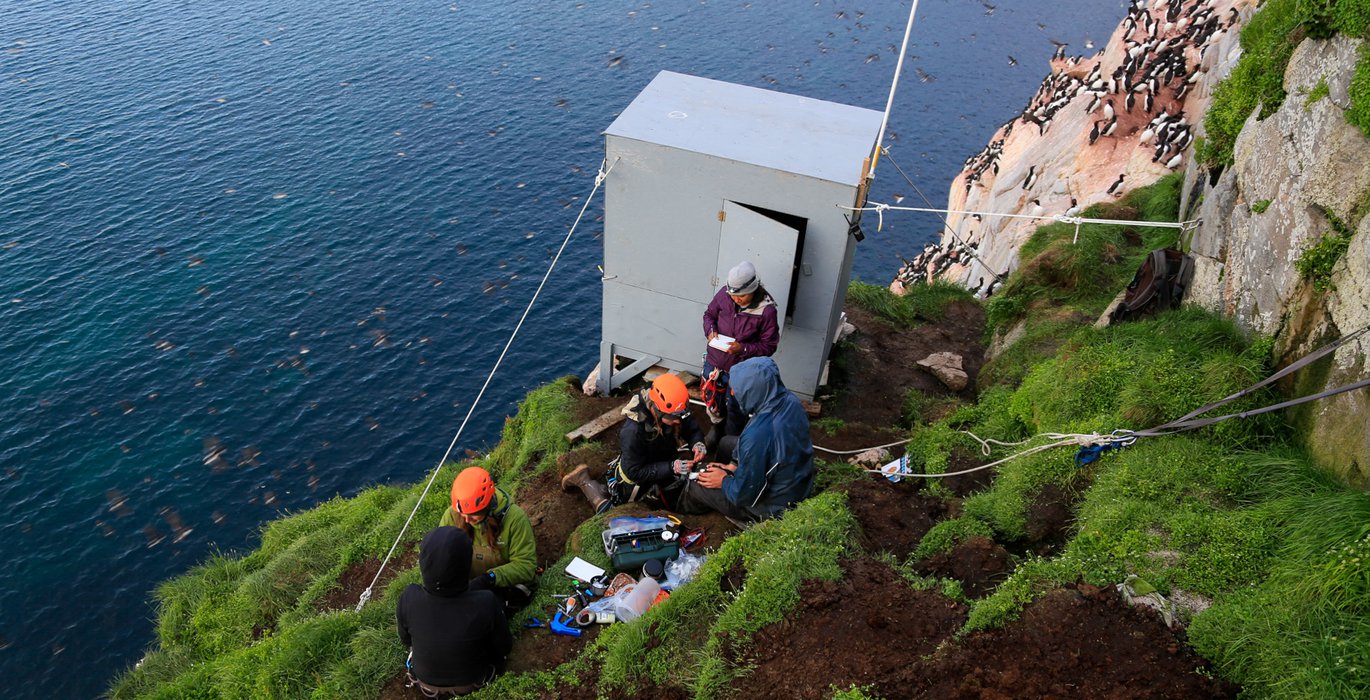
Thick billed murres are one of the most abundant sea bird species found in the Canadian Arctic. These large sea birds nest in dense colonies located on seaside cliffs and are known as one of the deepest underwater divers of all birds.
Many studies support seabirds as indicators of ecosystem changes. Given their large presence in the Canadian Arctic, this makes murres an even more interesting subject of study.
Dr. Emily S. Choy is the W. Garfield Weston Post Doc at Mcgill University, currently studying the thick billed murre colony on Coats Island in Northern Hudson Bay.
Her work focuses on the physiology of the species and how they are being affected by rising temperatures and increased shipping in the region.
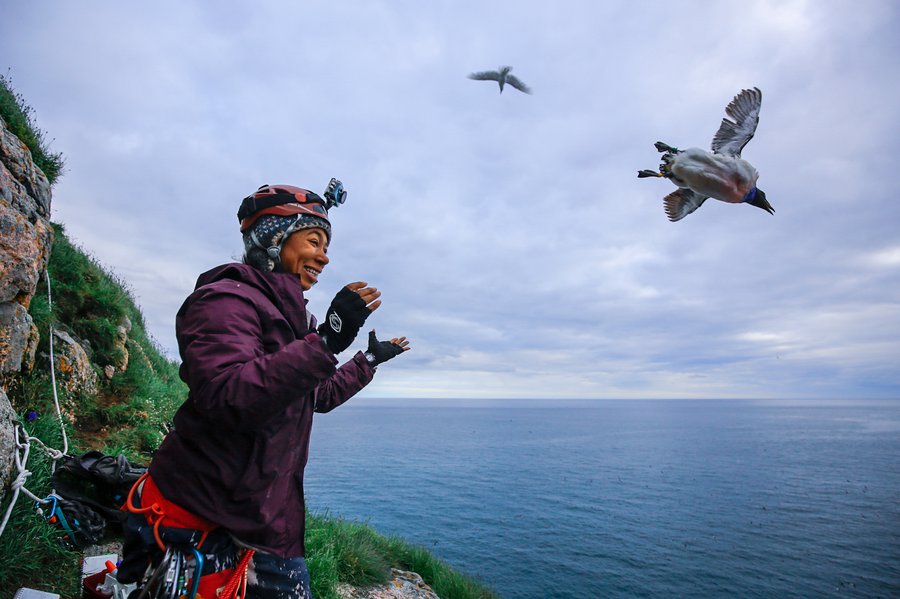
Dr. Emily S. Choy is the W. Garfield Weston Post Doc at Mcgill University, (Photo: Douglas Noblet)
Q: What are some of the changes that you have seen within the thick billed murre population in the last several years?
A: The program that I am a part of has been going on for the last 30 years…so, I’m lucky to be part of a program that has had long term data collection. During that time, sea ice has decreased drastically in the Arctic. We've found that the prey of the thick billed murres has shifted over the past 30 years from about 50 per cent Arctic cod, which is a sea ice associated fish, to over 50 per cent capelin.
Also, both the male and female [thick billed murres] have duties, and take turns incubating the nest. They will take 12 to 24-hour shifts with the eggs. But on days that are very hot, for example in 2011, the birds actually died while incubating their eggs. Also, in years that are particularly hot, the mosquitoes become bad and the time in which the mosquitoes come out increases.
So, the birds are dehydrating because of the hot weather, but they're also being parasitized by mosquitoes. The birds only have one egg per year and will not abandon their eggs, so they will go to the point of actually dying on their egg in the heat rather than to abandon. They put everything into this one egg in terms of reproductive success and it's important that they survive.
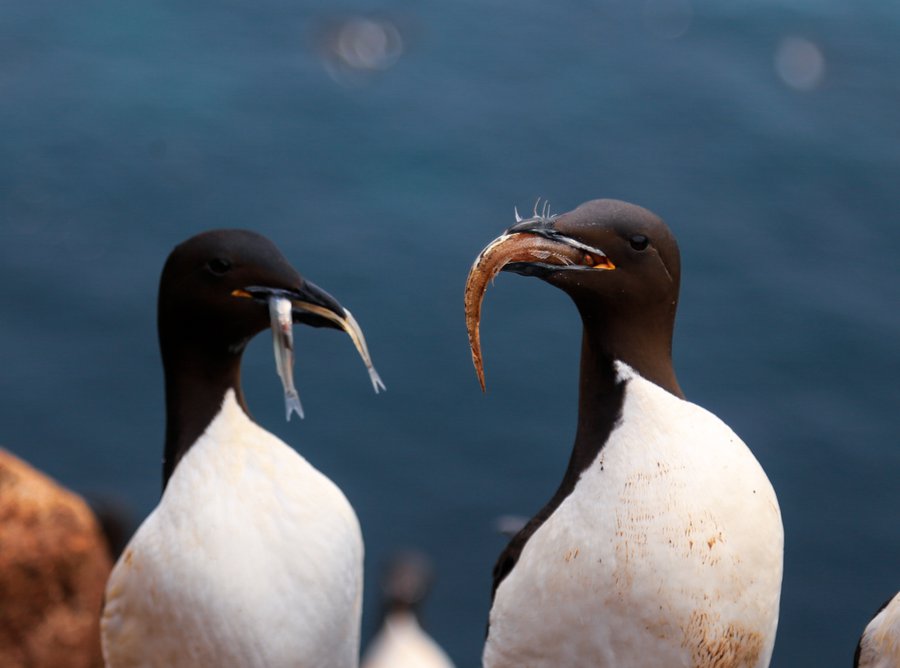
thick billed murres The diet of thick billed murres has shifted from about 50 per cent Arctic cod, to over 50 per cent capelin. (Photo: Douglas Noblet)
Q: Why is this shift in their diet so significant?
A: Arctic cod is a very important prey species in the Arctic. It is a very high fat, high lipid prey so it is one of the dominate prey for many marine mammals, including whales, seals and seabirds. And this prey is highly associated with sea ice, but also with cooler temperatures. There has been a decline in Arctic cod in many regions of the Arctic, but also moving into Hudson Bay has been capelin, which is a more Atlantic species and is actually smaller in terms if body size than Arctic cod.
The shift is due to the change of oceanographic conditions. The water is becoming warmer in Hudson Bay. So, the Arctic cod are moving northward and the more southern species such as capelin are moving in.
Some of the studies that my supervisor, Kyle Elliot, and Tony Gaston had done have shown that as the birds have switched to capelin the growth rates of their nestlings have actually decreased. Which is believed to have to do with the smaller body size of capelin versus Arctic cod.
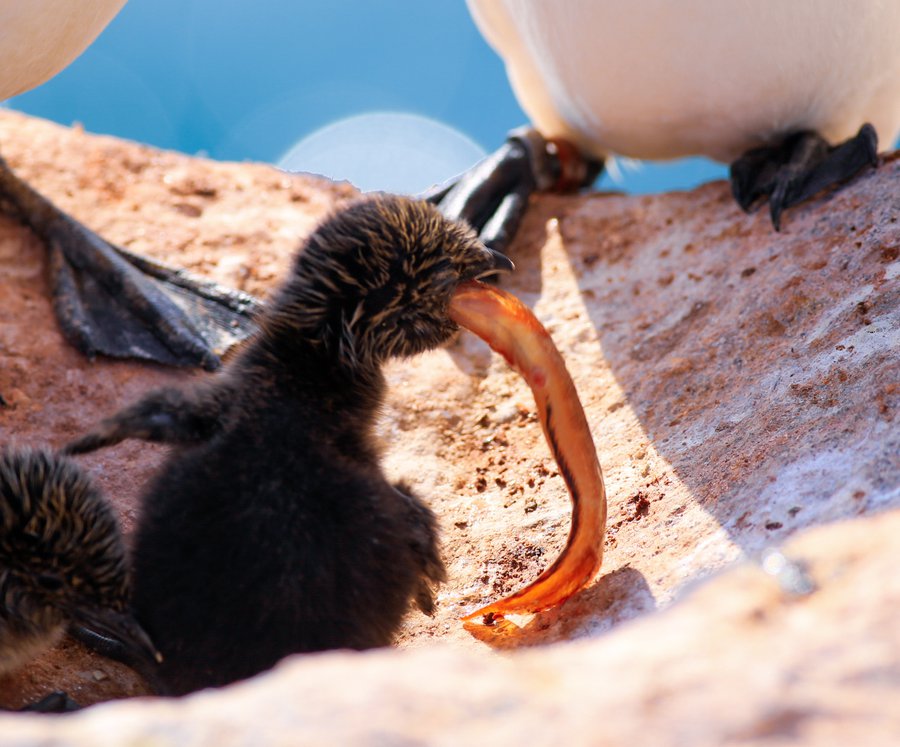
Research has found that the diet shift from Arctic cod to capelin has contributed to decreased growth rates in nestlings. (Photo: Douglas Noblet)
Q: What specifically are studying within the Coats Island thick billed murre colony?
A: I'm interested in the impacts or physiological effects of climate change on the murres. So, I am interested in the direct effects of the increases in temperature on the birds, but also the indirect effects of the shifts of prey on the bird’s energetics. So, I have a few projects that I am focusing closest on to answer those questions.
First, I am using something called open flow respirometry to look at the impacts of increasing temperature. So basically, I'm using respirometry and I'm measuring the metabolic rate, or breathing rate, of the birds. I’m using those measurements to see whether they become more stressed when their metabolic rate increases.
The big thing about murres is that they as a species are amazing divers. They can dive up to 100-200 meters, but they can also spend up to 4 hours a day flying. Because they are amazing divers their energetic costs of flight are huge, and they have the highest energetic costs of flight of any animal or bird.
So that is one of the reasons I am looking at the effects of heat and prey changes is because these birds, they already have a lot of stress in terms of their energetic costs, so can they also withstand increases in temperature or changes in food?
The second part is using heart rate to look at how changes in the prey are affecting the birds and changes in behaviour. I plant little tiny heart rate monitors into the birds and then I can measure heart rate demands. To do that I am also using other technologies like accelerometers which are basically little back packs that go on the birds. This can tell us what the birds behaviours are as well as an idea of the birds acceleration in three dimensions.
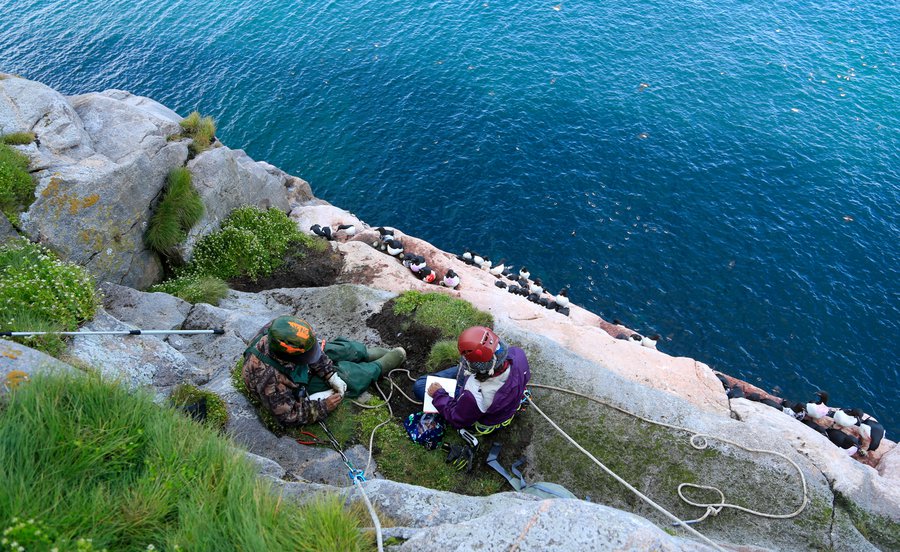
Everyday each team member is assigned a spot on the cliff for a roll check for things like new eggs, new chicks, any losses in eggs or chicks and a general count on the birds. (Photo: Douglas Noblet)
Q: In what ways have thick billed murres adapted to the cold?
A: Particularly with murres, the only uninsulated part of their body are their legs. They are also black and white in colour so in the sun, particularly on their nest, they tend to heat up very quickly.
My preliminary result showed their metabolic rates increased significantly with increasing temperature, but in terms of their ability to basically cool themselves, they are very, very poor adapted for trying to cool their bodies down at higher temperatures and are at risk of overheating.
Q: What is a typical day in the field collecting your data?
A: So, there is a team of about 6 to 11 people. We arrive on the beach, but we have two cabins where we stay at the top of the cliffs and have to haul our gear up with pullies.
We have long days in the field. Everyday each team member is assigned a spot on the cliff for a roll check for things like new eggs, new chicks, any losses in eggs or chicks and a general count on the birds.
Depending on the day and the time of year, we will do banding. We will place a band on the chicks, or we'll band the adults. These birds tend to be quite loyal to their nests, so the same birds tend to fly back to their same nests every year.
I was also studying heart rate and thermal tolerance, so there are days that I dedicate to that. I would also work with other team members and do heart rate surgeries, so I planted heart rate monitors in the birds and that allows for fine scale energetic measurements.
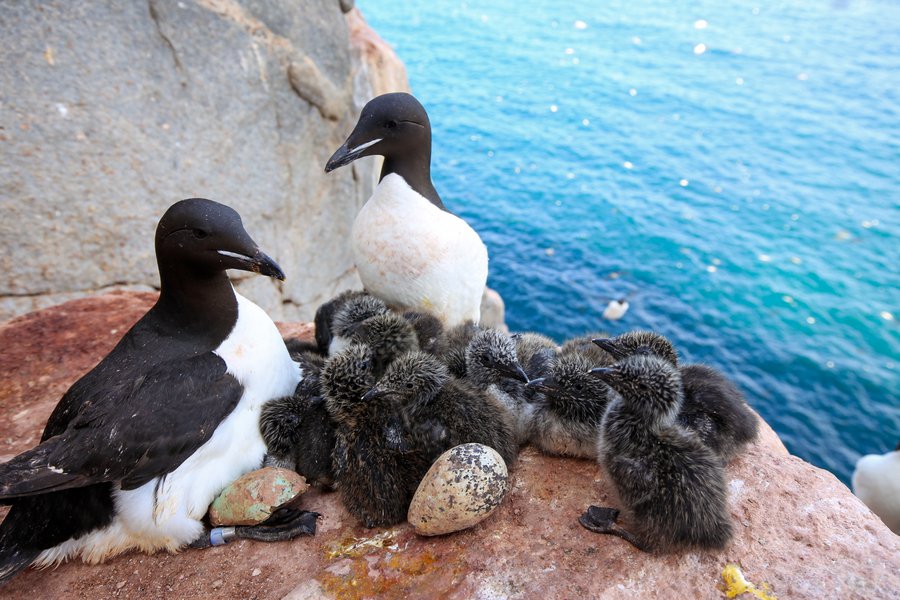
Thick billed murres only produce one egg per year. (Photo: Douglas Noblet)
Q: What are the biggest challenges to completing this work?
A: Well it's tough doing work in the Arctic in general because of the climate. There were some days where we were actually stuck because the weather had gotten really bad. Our plane was at one point supposed to pick us up and they couldn't land, so we had to spend an additional week on Coats just for poor weather. So, on bad weather days when it is really rainy or really windy, we can't work because it's not safe.
Another issue that is affecting the birds is that due to the decline in sea ice, there has been an increase in polar bears. So now polar bears who usually feed on their traditional diet of seals have increased their predation on the murre colony. Over the past two years there have been bears on the colony, and obviously it is not safe to work when they are in the area.
Another issue is I'm using a lot of novel technologies like heart rate and some of this has never been done before so there is just the challenge of being the first to be finding out all of the challenges in the field. In terms of the thermal tolerance work, very little of that work has been done on cold-adapted birds.
*This interview was edited for length and clarity.
